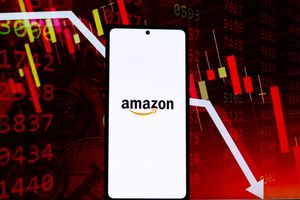
As broader markets grapple with persistent volatility on November 18, 2025, the healthcare sector within the S&P 500 (SPX) finds itself under intense scrutiny. Traditionally viewed as a stalwart defensive play, its performance today is crucial for understanding prevailing market sentiment. Is the sector merely living up to its reputation as a safe haven, attracting capital amidst uncertainty, or are specific industry developments and breakthroughs the primary drivers of its movements? This article delves into the dynamics shaping the healthcare sector's trajectory, examining whether its current performance is a testament to its inherent stability or a reflection of targeted innovation and regulatory shifts.
A Steady Hand in Turbulent Times: Unpacking Healthcare's Market Dynamics
In the face of ongoing market turbulence, the healthcare sector, encompassing pharmaceuticals, biotechnology, medical devices, and managed care, typically demonstrates a resilient performance. This inherent stability stems from the inelastic demand for its services and products; healthcare needs are largely non-discretionary, meaning consumers and governments continue to spend on them regardless of economic cycles. On November 18, 2025, this defensive characteristic is likely to be a significant factor in the sector's movements, with investors potentially rotating capital into healthcare stocks as a hedge against broader economic uncertainties.
While the sector's overall performance often acts as a barometer for risk appetite, specific sub-industries can exhibit varied behaviors. Large-cap pharmaceutical companies, known for their stable revenue streams from established drug portfolios and robust pipelines, often serve as primary beneficiaries of a flight to safety. Conversely, smaller biotechnology firms, heavily reliant on venture capital and successful clinical trial outcomes, may experience more pronounced volatility, even within a generally defensive sector. The timeline of events leading to the current market sentiment is characterized by a confluence of macroeconomic factors, including persistent inflation concerns, fluctuating interest rates, and geopolitical tensions, all contributing to an environment where stability is highly prized.
Key players and stakeholders across the healthcare landscape are acutely aware of these dynamics. Pharmaceutical giants like Johnson & Johnson (NYSE: JNJ) and Pfizer (NYSE: PFE), along with major health insurers such as UnitedHealth Group (NYSE: UNH), are often seen as anchors during uncertain times. Their consistent earnings and dividend payouts appeal to investors seeking reliability. Initial market reactions to the healthcare sector's performance today would likely indicate a nuanced picture: a general uplift for the broader sector driven by defensive positioning, but with specific movements influenced by individual company news, such as drug trial results, regulatory approvals, or M&A announcements that can inject targeted volatility or boost specific sub-segments.
Navigating the Shifting Tides: Potential Winners and Losers
The current market environment, marked by volatility and a search for stability, creates a distinct landscape of potential winners and losers within the healthcare sector. Companies with strong balance sheets, diversified product portfolios, and predictable cash flows are poised to thrive. Large-cap pharmaceutical companies, for instance, are often seen as "safe havens." Their extensive pipelines and global reach allow them to weather economic downturns more effectively. For example, a company like Merck & Co. (NYSE: MRK) with its strong oncology franchise and vaccine portfolio, would likely benefit from investors seeking consistent returns. Similarly, established medical device manufacturers such as Medtronic (NYSE: MDT), providing essential equipment, tend to maintain stable demand for their products, reinforcing their defensive appeal.
Conversely, smaller, early-stage biotechnology companies, which often operate without profitability and rely heavily on investor funding for research and development, may face significant headwinds. In a risk-off environment, capital becomes scarcer and investors demand quicker returns, making it challenging for these firms to secure necessary financing. Companies with drugs in early-stage clinical trials, or those focused on highly speculative therapies, could see their valuations decline or their ability to raise capital hampered. Furthermore, healthcare providers heavily reliant on elective procedures could experience fluctuations if consumer confidence wanes, though the current context of market volatility might prioritize essential services.
Health insurers and managed care organizations, like Elevance Health (NYSE: ELV) or Cigna Group (NYSE: CI), often exhibit resilience due to their recurring revenue models and essential service offerings. Their performance is less tied to economic cycles and more to factors such as enrollment numbers and healthcare utilization trends. However, they are not entirely immune; regulatory pressures on pricing or benefit structures could impact their profitability. Ultimately, the companies best positioned to win in this environment are those that combine the defensive characteristics of stable demand with a clear path to innovation and operational efficiency, while those heavily exposed to discretionary spending or high-risk R&D without near-term catalysts may struggle.
Beyond the Immediate: Broader Implications and Historical Context
The healthcare sector's performance today, whether driven by defensive plays or specific industry news, carries wider significance that resonates with broader industry trends. The aging global population continues to be a powerful, long-term tailwind, ensuring sustained demand for pharmaceutical products, medical devices, and healthcare services. This demographic shift provides a fundamental underpinning for the sector's growth, making it an attractive long-term investment regardless of short-term market fluctuations. Furthermore, continuous technological advancements, from gene therapies and AI-driven diagnostics to minimally invasive surgical techniques, are reshaping the industry, creating new markets and driving innovation. Companies that are at the forefront of these breakthroughs, such as those specializing in CRISPR technology or advanced robotics, are poised for significant growth, potentially offsetting broader market downturns.
Ripple effects from the sector's performance can be felt across various stakeholders. A strong defensive showing by healthcare giants could signal investor confidence in the sector's resilience, encouraging further investment in healthcare-focused funds and ETFs. This could also impact smaller biotech partners, as larger pharmaceutical companies might seek to acquire promising technologies or collaborate on drug development, injecting capital into the ecosystem. Regulatory and policy implications are also paramount. Discussions around drug pricing, healthcare reform, and the approval processes for new drugs by agencies like the FDA can significantly influence company valuations and the overall sector outlook. Any legislative movements on these fronts could introduce new risks or opportunities, compelling companies to adapt their strategies.
Historically, the healthcare sector has often served as a reliable haven during periods of economic uncertainty. During the dot-com bubble burst in the early 2000s and the 2008 financial crisis, healthcare stocks generally outperformed the broader market. This historical precedent reinforces the sector's reputation as a defensive investment. Comparisons to similar events suggest that while individual companies may face unique challenges, the overall sector tends to demonstrate stability due to the non-cyclical nature of healthcare demand. This resilience is a key differentiator, distinguishing it from more economically sensitive sectors and highlighting its critical role in a diversified investment portfolio.
The Road Ahead: Navigating Future Opportunities and Challenges
Looking beyond the immediate market movements, the healthcare sector faces a landscape rich with both short-term challenges and long-term opportunities. In the short term, continued market volatility may see investors further consolidate positions in established, large-cap healthcare companies, prioritizing stable dividends and consistent earnings over high-growth, high-risk ventures. This trend could lead to sustained outperformance for pharmaceutical and medical device giants, while smaller biotech firms might continue to struggle for funding amidst tighter capital markets. The ongoing pressure to innovate, however, remains a constant, pushing companies to invest heavily in R&D to bring new therapies and technologies to market.
In the long term, the sector's trajectory will be shaped by several powerful forces. The accelerating pace of scientific discovery, particularly in areas like personalized medicine, gene editing, and digital health, promises revolutionary advancements. Companies that successfully leverage these technologies, such as those developing AI-powered diagnostic tools or novel cell and gene therapies, are poised for substantial growth. Strategic pivots and adaptations will be crucial for all players. Pharmaceutical companies may increasingly focus on precision medicine and rare diseases, while healthcare providers might invest more in telehealth and preventative care models to improve efficiency and patient outcomes.
Market opportunities will emerge for companies addressing unmet medical needs, especially in chronic disease management and age-related conditions. The global demand for accessible and affordable healthcare solutions will also drive innovation in emerging markets. Conversely, challenges will include navigating complex regulatory environments, managing escalating R&D costs, and responding to public and political pressure regarding drug pricing. Potential scenarios range from a sustained period of defensive outperformance for the sector, acting as a buffer against broader economic headwinds, to a more bifurcated market where innovative, high-growth companies thrive irrespective of the economic climate, while traditional players face increased competition and pricing pressure. Investors should carefully evaluate companies' pipelines, market positions, and regulatory exposure.
A Resilient Pillar: Key Takeaways and Future Outlook
The performance of the healthcare sector on November 18, 2025, amidst prevailing market volatility, underscores its enduring role as a resilient pillar in the S&P 500. The key takeaway is that while specific company news and innovation undoubtedly drive individual stock movements, the sector's fundamental defensive characteristics provide a significant underlying support during periods of economic uncertainty. Its non-cyclical demand, fueled by an aging population and essential medical needs, often positions it as a safe haven for investors seeking stability and predictable returns. This dual nature – a blend of defensive strength and innovation-driven growth – defines its current market posture.
Moving forward, the healthcare market is expected to remain dynamic, influenced by a confluence of demographic shifts, technological advancements, and evolving regulatory landscapes. Investors should assess companies not only on their current performance but also on their strategic positioning for future growth areas, such as precision medicine, digital health, and novel therapeutic modalities. The sector's ability to adapt to new scientific discoveries and policy changes will be paramount. Companies with robust pipelines, strong intellectual property, and efficient operational models are likely to navigate future challenges more effectively.
In the coming months, investors should closely watch for significant clinical trial readouts, major regulatory approvals from bodies like the FDA, and any legislative developments pertaining to healthcare policy or drug pricing. Mergers and acquisitions activity within the pharmaceutical and biotech space will also serve as a key indicator of market sentiment and future growth strategies. The healthcare sector's enduring significance as both a defensive play and a hotbed of innovation ensures its continued relevance and potential for long-term value creation in an ever-changing global economy.
This content is intended for informational purposes only and is not financial advice







